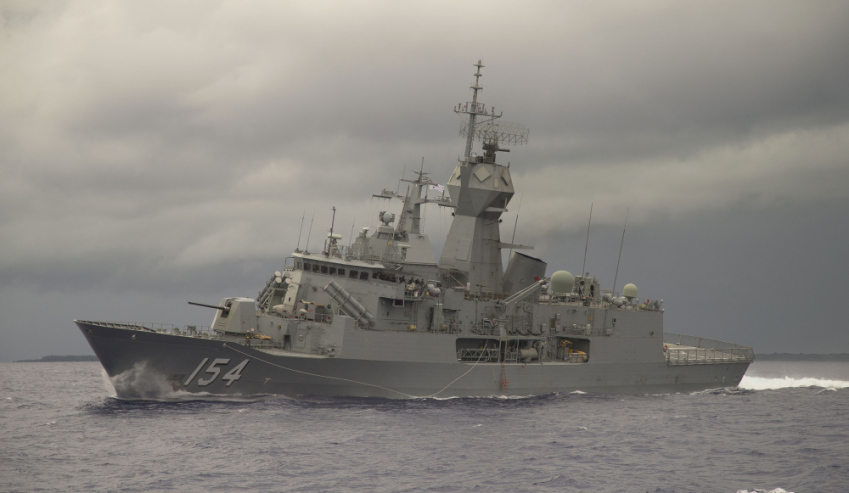Maritime Aviation Warfare Officer Lieutenant Commander Damian Liberale recently celebrated an impressive feat by achieving 1,000 hours of flying time in Sikorsky Seahawk helicopters while deployed in HMAS Parramatta.
To continue reading the rest of this article, please log in.
Create free account to get unlimited news articles and more!
LCDR Liberale, of 816 Squadron’s Flight 4, racked up his 1,000th hour during a night-time sortie in Parramatta’s embarked helicopter, dubbed ‘Medusa’.
Parramatta is a long-range frigate capable of air defence, surface and undersea warfare, surveillance, reconnaissance and interdiction. Anzac's combat capabilities have been significantly improved under the Anti-Ship Missile Defence upgrade program, a world-class program that provides an enhanced sensor and weapons systems capability.
The ship can embark Navy’s latest multi-role Sikorsky/Lockheed Martin MH-60R Seahawk helicopter, which has enhanced anti-submarine, anti-surface warfare, and search and rescue capabilities. Embarkation of a helicopter also provides the ship with the capability to deliver air-launched missiles and torpedoes.
While it took seven years for LCDR Liberale to achieve 1,000 hours flying Sikorsky S70-B-2 ‘Bravo’ helicopters and their successor, the MH-60R ‘Romeo’, he has been working on them long before he was flying on them
“I was a Seahawk maintainer for 15 years before I was an Aviation Warfare Officer, so I have had a very close relationship with both S70B-2s and MH-60Rs,” LCDR Liberale said to Navy Daily about the feat.
His time as a naval aviator has seen him fly counter-narcotic operations in the Middle East as well as United Nations operations in North Asia, and he has many fond memories of his time in the air.
“A favourite memory would be conducting the first joint Australia-US MH-60R live Hellfire missile firing during Exercise PACIFIC VANGUARD in May last year,” LCDR Liberale said.
“It was great confirmation that the training pilots, aircrew and maintenance team had undergone was sufficient to get a missile on-target and doing that with a coalition partner felt like a real collective accomplishment.”
While some elements of flying have changed, LCDR Liberale still feels the excitement of being in the air.
“Things like regulation and governance have continuously evolved and personnel involved in maritime aviation must review and remain abreast of these contemporary requirements, but the thrill and enjoyment of flying remains the same,” LCDR Liberale said.
“I’ve loved the opportunity to fly over locations like Ashmore Reef, the Great Barrier Reef, Djibouti and other remote locations most people never get the opportunity to see from the airborne perspective. It’s a great privilege.”
Maritime Aviation Warfare Officers like LCDR Liberale act as Mission Commanders for Navy helicopters, managing weapon and sensor systems and directing operations from the air.
Navy has 24 MH-60R ‘Romeo’ helicopters assigned to 816 and 725 Squadrons at Nowra, providing submarine hunting, anti-surface warfare and search and rescue capabilities.
The MH-60R is equipped with a highly sophisticated combat systems designed to employ Hellfire air-to-surface missiles and the Mark 54 anti-submarine torpedo. The primary missions of the 'Romeo' helicopter is anti-submarine warfare and anti-surface warfare. Secondary missions include search and rescue, logistics support, personnel transport and medical evacuation.

 Login
Login







